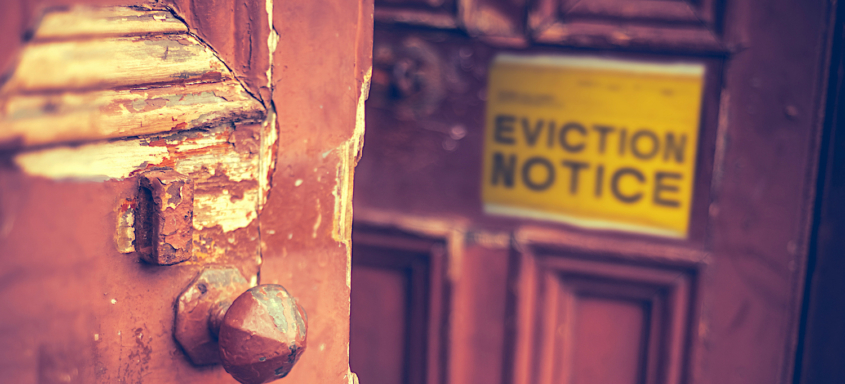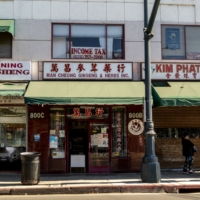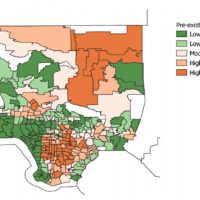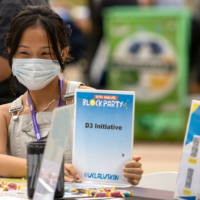New Study Warns of Looming Eviction Crisis in Los Angeles County A report from the UCLA Luskin Institute on Inequality and Democracy predicts that as many as 120,000 households, with 184,000 children, could experience homelessness because of the pandemic
By Les Dunseith
Los Angeles will soon experience waves of evictions as a result of the coronavirus pandemic, according to a new report from the UCLA Luskin Institute on Inequality and Democracy.
Author Gary Blasi, a UCLA professor emeritus of law, closely and thoroughly examines the precarious state of housing for workers in Los Angeles County who are unemployed and have no replacement income in the time of COVID-19.
The report starts with the 1,198,141 unemployment claims filed so far in Los Angeles County during the COVID-19 emergency, a level of unemployment not seen since the Great Depression.
Historical experience and previous studies have consistently shown that only about two-thirds of eligible workers apply for unemployment insurance, which in this case means 599,000 additional workers in Los Angeles County who are now unemployed. Blasi said that unemployed workers may not apply for many different reasons, among them the fact that 13% of the county workforce is undocumented and thus ineligible for unemployment benefits.
“Even before the pandemic, the number of those who were precariously housed was shocking,” Blasi said. “About 600,000 people in Los Angeles County lived in households where 90% of household income was being used to pay rent.”
Based on census data, Blasi estimates that about 75% of workers with no income are renters, or about 449,000 individuals in 365,000 renter households unable to pay rent and with no replacement income, nearly all of whom he says will be displaced.
Given the unprecedented nature of the crisis and the unknown capacity of familial and social networks to save those evicted from homelessness, Blasi offers two estimates. The most optimistic estimate is that 36,000 renter households, with 56,000 children based on U.S. Census figures for Los Angeles County, are likely to become homeless. If those support networks have been severely degraded by the pandemic, those numbers could rise to 120,000 newly homeless households, with 184,000 children.
Blasi notes that nearly all eviction cases, known as unlawful detainer proceedings, were stopped in early April by the California Judicial Council, the administrative arm of the state’s judiciary. That freeze expires either 90 days after the governor declares the COVID-19 emergency has ended, or when the order is amended or repealed by the Judicial Counci.
“The governor is highly unlikely to relinquish all his emergency powers while the public health crisis continues, but the Judicial Council will face enormous pressure from landlords to lift the hold on unlawful detainer cases,” Blasi said. “The floodgates will open.”
The report shows that the various restrictions on evictions placed by state and local officials since the onset of the COVID-19 pandemic are unlikely to have much effect unless tenants have access to a lawyer, which is rarely the case in Los Angeles.
Professor Ananya Roy, the director of the UCLA Luskin Institute on Inequality and Democracy, described Blasi as one of the luminaries of public interest law, and emphasized the significance of this report.
“While the report shows the vast scale of the devastation to come in the form of evictions and homelessness in Los Angeles, none of this is inevitable,” she said. “The report makes it clear that the crisis at hand is as much political inertia as it is a public health emergency.”
The paper also includes several policy recommendations and options, beginning with interventions that allow more tenants to pay rent and reduce the number of evictions, some of which are currently being discussed in Sacramento.
Given that tenants who represent themselves almost always lose eviction cases in which landlords are represented by a lawyer, the report argues for a massive expansion of the number of attorneys to help tenants defend themselves. Potential partner organizations such as Neighborhood Legal Services, Legal Aid Foundation of Los Angeles and Inner City Law Center are mentioned.
For those who are evicted, the report argues for expanding current “rapid rehousing” programs and dramatically increasing the number of currently vacant hotel and motel rooms to provide temporary shelter. As a last resort, the report argues, government officials must prepare to rapidly expand second-best alternatives such as villages of small structures and authorized and supported encampments.
Subsequent reports by the Institute, including “Hotels as Housing” and “Preparing for the Camps,” will address these measures in greater detail.









i do not know why Govt. has not yet made second best relief at least build small homes and or allow provide encampments to help care for what filthy greed has created.
Let’s face it this is social and economic inequality extremes. The rich whi own multi homes and or multi hudreds thousand dollar homes ….or millions dollars homes……
Homeowners, hate homeless even if the homeless work, are clean, etc…
Because home owners associate homelessness
as an element that depreciates their homes value…..
Rich dont want to see even the steet with the poor who do the labor needed by rich homeowners……
it is a real rat race people…..
when will the spider web give?